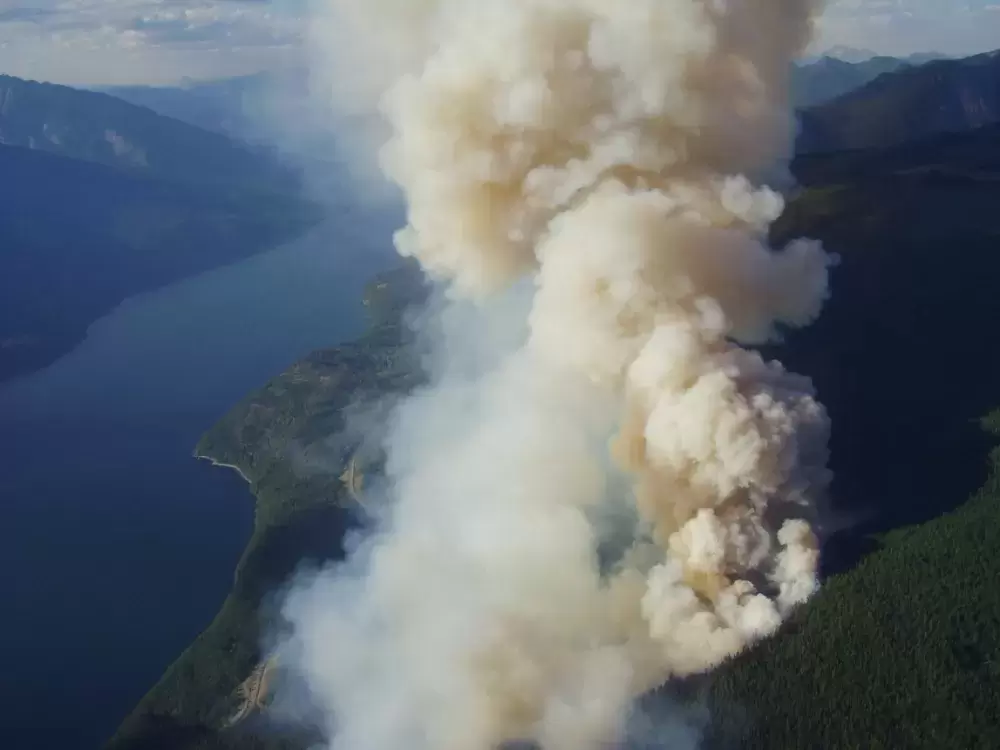The forest fire season has arrived on Vancouver Island.
But some positive news is that early indications are the blazes are not expected to be as horrific as the past two years, two of the province’s worst wildfire seasons on record in terms of number of fires and hectares lost.
“We don’t like to speculate because wildfires are so dependent on weather,” said Dorthe Jakobsen, the fire information officer for BC Wildfire Service’s Coastal Fire Centre, who works out of her office in Parksville. “But our prediction services experts are saying it will be a near normal summer on the coast.”
Jakobsen realizes, however, the unpredictability of wildfires can change drastically in a heartbeat.
“On the coast we had a lightning event in early August (last year),” she said. “It brought us like 60 wildfires overnight in northern remote communities.”
Officials are hoping wildfires - not only on the West Coast but throughout the province - will not be as bad as the past two years, partly because the B.C. government has stepped up funding to keep its communities safer. It was announced in March that the provincial government was increasing its wildfire management funding to $101 million per year. That’s a 58 per cent increase from what it was in 2018.
“We’re obviously always asking for funding,” Jakobsen said. “Given what happened the past two years, the government in its wisdom decided to give us a budget surplus.”
Kyla Fraser, a fire information officer with BC Wildfire Service’s provincial office in Kamloops, said the additional funding will help by enhancing aerial availability and hiring more contracted crews to battle blazes. Plus, the extra money will also enable officials to purchase night-vision goggles, drones and hand-held computers to better fight wildfires.
“These are all things we’d be introducing this year,” she said of new technological purchases BC Wildfire Service will now have at its assets.
The new technology will be part of a pilot project being undertaken this summer. Night-vision goggles will be useful to assist in early detection and responses to wildfires.
Additional provincial funding will also help communities initiate or expand fire prevention and awareness programs.
The increased wildfire management funding is on top of the new $50-million Community Resiliency Investment program which the B.C. government announced this past September.
This money was targeted to help First Nations and other communities in the province decrease their wildfire risks.
In its 2019 budget announced earlier this year, provincial officials decided to bump up funding for this new program by an additional $10 million, bringing funding up to $60 million.
Last year the B.C. Assembly of First Nations had urged both the provincial and Canadian governments to provide resources to deal with wildfires.
Like its B.C. counterparts, the federal government has also stepped up to offer some assistance.
When the federal budget was tabled in March this year $200 million was promised to be distributed among the 198 First Nation communities in B.C. That money is intended to go towards emergency training and equipment to help counteract climate change effects.
The BC Wildfire Service updates its fire danger ratings throughout the province on a daily basis. Members of the public can view these ratings at https://www2.gov.bc.ca/gov/content/safety/wildfire-status/wildfire-situation/fire-danger.
There have been high to extreme danger ratings in the northern parts of the province so far this season. Fraser said the West Coast, which covers a massive area, has primarily had moderate to high danger ratings. Forecasts called for some rain on the coast in the early portions of the first week of June.
“We’re sitting in a fairly nice place at the moment,” Fraser said. “The more moisture we have the better.”







